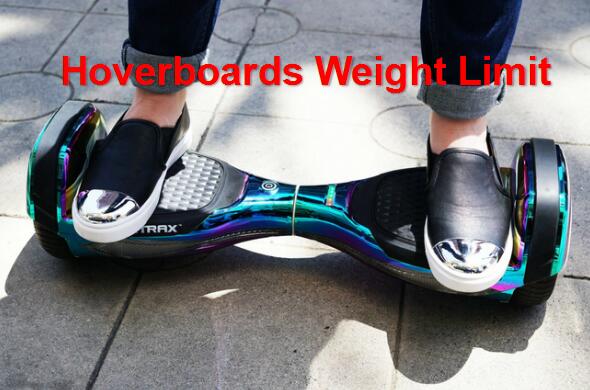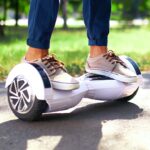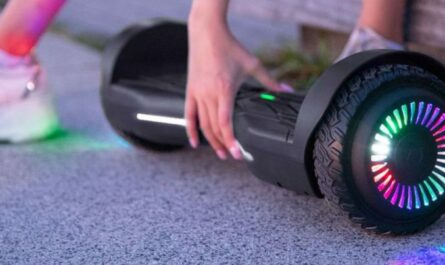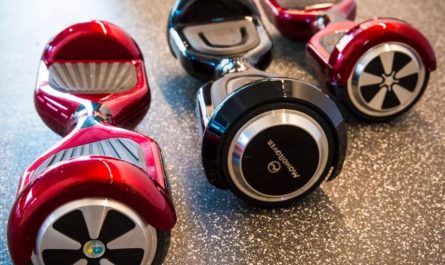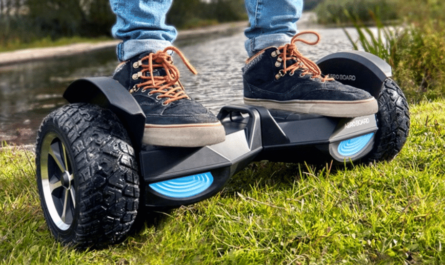Hoverboards have become increasingly popular in recent years, offering a fun and convenient way to travel short distances. However, before purchasing or riding a hoverboard, it’s essential to consider the weight limit to ensure a safe and enjoyable experience. In this article, we’ll explore the importance of hoverboard weight limits and the specific weight capacities of various hoverboard models.
Table of Contents
What are Hoverboard Weight Limits?
A hoverboard’s published weight limit indicates the maximum load the device can safely handle while maintaining control and stability. Most standard hoverboard models have restrictions between 180-220 pounds.
However, heavy-duty variants built for larger riders can accommodate up to 420 pounds or more. There is also a minimum rider weight, typically 45-60 pounds, for the sensors and gyroscope to work properly.
The Science Behind Weight Limits
Hoverboards are complex devices that rely on a delicate balance of components to function properly. The weight limit of a hoverboard is determined by the combined capabilities of its motors, battery, and frame.
When a rider stands on a hoverboard, their weight is distributed across the platform and onto the wheels. The motors must generate enough torque to overcome the rider’s weight and propel the hoverboard forward. The battery must also supply sufficient power to the motors to maintain speed and performance.
If the rider’s weight exceeds the hoverboard’s designed capacity, it can cause the motors to work harder than intended, drawing more power from the battery and generating excess heat. This can lead to reduced efficiency, slower speeds, and potential damage to the components.
Additionally, the hoverboard’s frame and platform must be strong enough to support the rider’s weight without bending, warping, or breaking. Overloading the frame can cause structural damage and compromise the hoverboard’s stability and safety.
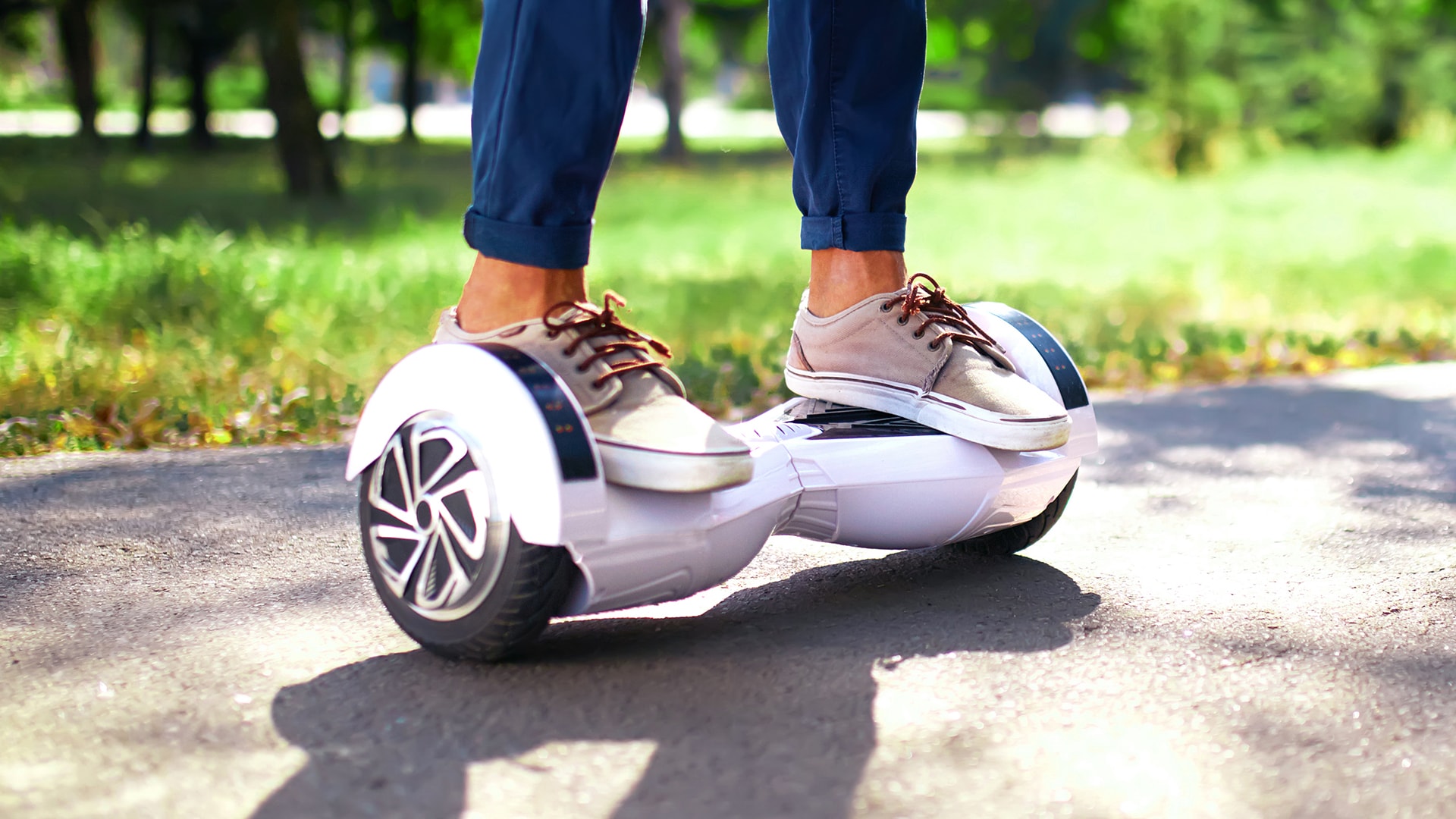
Factors That Influence Hoverboard Weight Limits
Several factors contribute to the weight limit of a hoverboard, including:
- Wheel size: Hoverboards with larger wheels, such as 8-inch or 10-inch models, generally have higher weight capacities compared to those with smaller, 6.5-inch wheels. Larger wheels provide more ground clearance and stability. This allows them to support heavier riders.
- Motor power: The strength and wattage of the hoverboard’s motors play a significant role in determining its weight capacity. More powerful motors can generate more torque and support heavier riders while maintaining adequate speed and performance.
- Battery capacity: The size and capacity of the hoverboard’s battery can also influence its weight limit. Larger, higher-capacity batteries can supply more power to the motors. This enables the hoverboard to support heavier loads without compromising range or performance.
- Frame material: The quality and durability of the materials used in the hoverboard’s frame and platform can affect its weight capacity. High-quality, reinforced materials can withstand greater stress and support more weight compared to cheaper, less durable materials.
- Dual vs. single motors: Hoverboards with dual motors (one in each wheel) generally have higher weight capacities than those with a single motor. Dual motors provide more power and better weight distribution. This allows the hoverboard to support heavier riders more effectively.
- Brand and model: Different hoverboard brands and models may have varying weight limits based on their specific design, components, and intended use. Some models are designed for children or lighter riders, while others are built to accommodate heavier adults.
Common Hoverboard Weight Limits
To give you a better idea, here are the weight limits of some popular models:
| Hoverboard | Wheel Size | Weight Limit | Build |
|---|---|---|---|
| Swagtron T6 | 10″ | 420 lbs | Durable aluminum alloy frame |
| Epikgo Sport | 8.5″ | 420 lbs | Solid Rubber tires, steel frame |
| Razor Hovertrax 2.0 | 6.5” | 220 lbs | Standard plastic body |
| Megawheels S5 | 7.5” | 264 lbs | Mini hoverboard, sturdy build |
| UNI-SUN 6.5” | 6.5” | 165 lbs | Entry-level, plastic frame |
Hoverboard weight limits can vary depending on the manufacturer and model. However, there are some common weight ranges associated with different hoverboard sizes:
1. 6.5-inch hoverboards
These models typically have a weight limit of around 220 lbs (100 kg). They are suitable for most children and average-sized adults. Some examples of 6.5-inch hoverboards include:
- Swagtron T580 (max weight: 220 lbs)
- Razor Hovertrax 2.0 (max weight: 220 lbs)
- Gotrax SRX (max weight: 220 lbs)
2. 8-inch hoverboards
Hoverboards with 8-inch wheels often have a weight capacity of approximately 265 lbs (120 kg). They can accommodate larger adults and provide a more stable ride on uneven surfaces. Examples of 8-inch hoverboards include:
- Segway Ninebot S (max weight: 265 lbs)
- Tomoloo Q2-C (max weight: 265 lbs)
- Gyroor Warrior (max weight: 265 lbs)
3. 10-inch hoverboards
The largest and most powerful hoverboards, 10-inch models, can support weights up to 330 lbs (150 kg) or more. They are ideal for heavier riders and those who want a more robust and versatile hoverboard. Some popular 10-inch hoverboards are:
- Swagtron T6 (max weight: 420 lbs)
- Halo Rover X (max weight: 260 lbs)
- Epikgo Sport (max weight: 265 lbs)
It’s crucial to check the specific weight limit of a hoverboard model before purchasing or riding it. This information can usually be found in the product specifications or user manual.
Consequences of Exceeding the Weight Limit
Ignoring the weight limit and riding a hoverboard that is not designed to support your weight can lead to various consequences, such as:
- Reduced performance: Overloading the hoverboard can cause it to move slower, accelerate more slowly, and struggle to climb inclines. This can make the riding experience less enjoyable and more frustrating.
- Decreased battery life: Exceeding the weight limit puts additional strain on the battery, causing it to drain more quickly. This can result in shorter ride times and more frequent charging.
- Increased risk of accidents: An overloaded hoverboard may not respond as quickly or accurately to the rider’s movements, making it more difficult to control. This can increase the likelihood of falls, collisions, and other accidents.
- Damage to the hoverboard: Riding a hoverboard beyond its weight capacity can cause excessive wear on the wheels, bearings, motors, and other components. This can lead to premature failure and costly repairs.
- Voided warranty: Many hoverboard warranties explicitly state that exceeding the weight limit will void the coverage. If a rider damages their hoverboard by overloading it, they may be responsible for any repair or replacement costs.
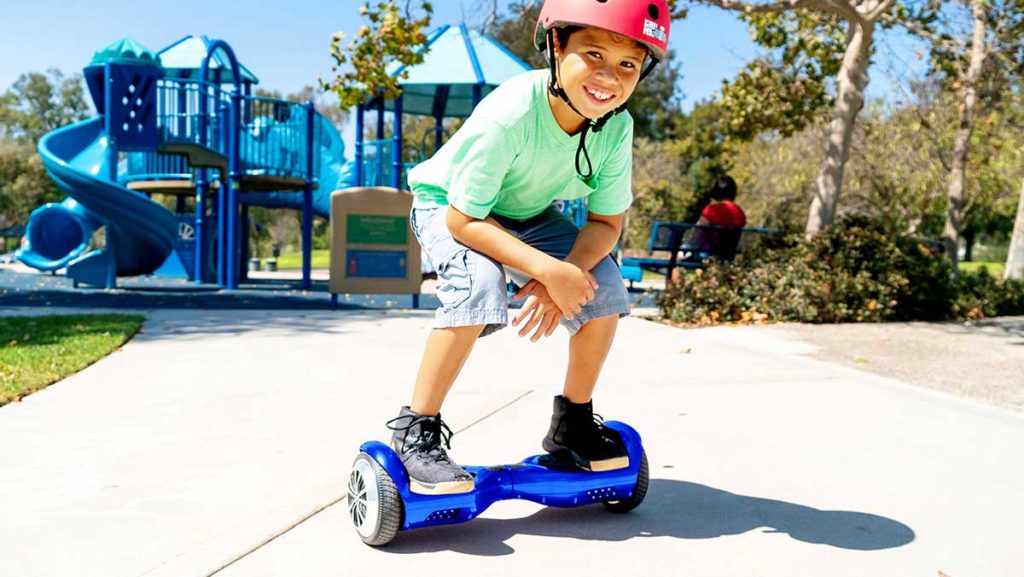
How to Choosing the Right Hoverboard for Your Weight
When selecting a hoverboard, it’s essential to consider your weight and choose a model that is designed to support it. Here are some tips to help you find the right hoverboard:
- Check the weight limit: Always review the product specifications or user manual to determine the hoverboard’s maximum weight capacity. Make sure to choose a model that can comfortably support your weight.
- Consider wheel size: If you are a heavier rider, opt for a hoverboard with larger wheels, such as 8-inch or 10-inch models. These hoverboards generally have higher weight capacities and provide a more stable ride.
- Look for powerful motors: Hoverboards with higher wattage motors can support more weight and offer better performance. If you are close to the upper end of a hoverboard’s weight limit, choose a model with stronger motors to ensure a smooth and safe ride.
- Read reviews: Before purchasing a hoverboard, read customer reviews to see how well it performs for riders of different weights. Pay attention to any comments about the hoverboard’s stability, speed, and overall performance.
- Consult with the manufacturer: If you have specific questions or concerns about a hoverboard’s weight limit or suitability for your needs, don’t hesitate to contact the manufacturer directly. They can provide more detailed information and recommendations based on your circumstances.
How to Pick the Right Hoverboard for Your Weight?
Selecting a suitable hoverboard involves a few key considerations:
- Know your total weight including clothes, backpack, etc. This is the true load your hoverboard must carry.
- Find your weight range – under 120 lbs, 120-180 lbs, 180-240 lbs, or over 240 lbs.
- Choose a hoverboard with a maximum limit of 20-30 lbs above your total weight for a safer buffer.
- Taller individuals should ensure adequate deck size for their shoe size.
- Riders nearing weight limits should opt for maximum wheel size and heavy-duty builds.
- People well below the minimum weight can look for child-specific hoverboard models.
Let’s explore suitable hoverboard choices based on different weight ranges:
Under 120 Pounds
- Wheel size – 6.5″-8″ standard wheels offer adequate stability.
- Frame – Entry-level plastic is fine for lighter loads.
- Motors – Single or dual smaller motors around 200-250W.
Example models: Swagtron Swagboard Entry Level, TOMOLOO Music-Rhythmed.
120-180 Pounds
- Wheel size – Look for 8″-8.5″ for better control.
- Frame – Standard plastic or aluminum alloy.
- Motors – Dual motors around 300W each.
Example models: Gyroor Warrior 8.5″, UNI-SUN X1 Plus.
180-240 Pounds
- Wheel size – Larger 8.5″-10″ provides the best stability.
- Frame – Priority on aluminum alloy or magnesium.
- Motors – Dual higher-powered motors, 350W and up.
Example models: Gotrax G4, Megawheels S5.
Over 240 Pounds
- Wheel size – 10″ wheels optimal for heavy loads.
- Frame – Sturdy steel or reinforced alloy.
- Motors – Extra-large dual motors, 500-800W power.
Example models: Swagtron T6, Epikgo Sport.
Factors to Consider for Heavier Riders
If you are a heavier rider, there are a few additional factors to keep in mind when choosing a hoverboard:
- Wheel material: Look for hoverboards with high-quality, durable wheel materials, such as solid rubber or polyurethane. These materials can better withstand the added stress of heavier riders and provide a smoother, more stable ride.
- Suspension: Some higher-end hoverboards feature built-in suspension systems that help absorb shocks and vibrations. This can make the ride more comfortable for heavier riders and reduce the impact on the hoverboard’s components.
- Wider footpads: Hoverboards with wider, more spacious footpads can provide a more comfortable and stable platform for larger feet. This can help improve balance and control, especially for heavier riders.
- Reinforced frame: Choose a hoverboard with a sturdy, reinforced frame that can support your weight without flexing or bending. Look for models with high-quality materials and construction to ensure long-lasting durability.
By considering these factors and selecting a hoverboard that is designed to accommodate your weight, you can enjoy a safer, more comfortable, and more enjoyable riding experience.

Safety Tips for Riding a Hoverboard
Regardless of your weight or the hoverboard model you choose, it’s crucial to prioritize safety when riding. Here are some essential safety tips to keep in mind:
- Wear protective gear: Always wear a helmet, wrist guards, elbow pads, and knee pads to reduce the risk of injury in case of a fall.
- Start slowly: When first learning to ride a hoverboard, begin in a safe, open area and take your time getting comfortable with the controls and balance.
- Be aware of your surroundings: Watch out for obstacles, uneven surfaces, and other hazards that could cause you to lose control or fall.
- Avoid distractions: Do not use your phone, listen to music, or engage in other distracting activities while riding a hoverboard.
- Follow local laws and regulations: Be sure to comply with any local laws or restrictions regarding hoverboard use, such as age limits, helmet requirements, or prohibited areas.
Proper Riding Technique
In addition to following safety guidelines, it’s important to use proper riding techniques to maintain balance and control on your hoverboard. Here are some tips:
- Keep your feet shoulder-width apart: Maintain a stable, balanced stance by keeping your feet roughly shoulder-width apart on the footpads.
- Lean forward slightly: When accelerating or climbing inclines, lean your body slightly forward to shift your weight over the front of the hoverboard. This helps maintain traction and stability.
- Lean back when stopping: To slow down or stop, gently lean your body back, shifting your weight towards the rear of the hoverboard. This will cause the hoverboard to decelerate smoothly.
- Use your core for balance: Engage your core muscles to help maintain balance and stability while riding. Keep your body relaxed but controlled, and avoid making sudden, jerky movements.
- Look ahead: Keep your eyes focused on the path ahead, rather than looking down at your feet. This helps you anticipate obstacles and maintain a stable, upright posture.
By using proper riding techniques and following safety guidelines, you can minimize the risk of accidents and enjoy a more controlled, comfortable hoverboard experience.
Conclusion
Understanding and adhering to hoverboard weight limits is essential for ensuring a safe, enjoyable, and long-lasting riding experience. By choosing a hoverboard that is designed to support your weight and following proper safety guidelines, you can minimize the risk of accidents, damage, and disappointment.
Remember to always check the weight capacity of a hoverboard before purchasing or riding it. If you have any doubts or concerns, consult with the manufacturer to find the best hoverboard for you.

